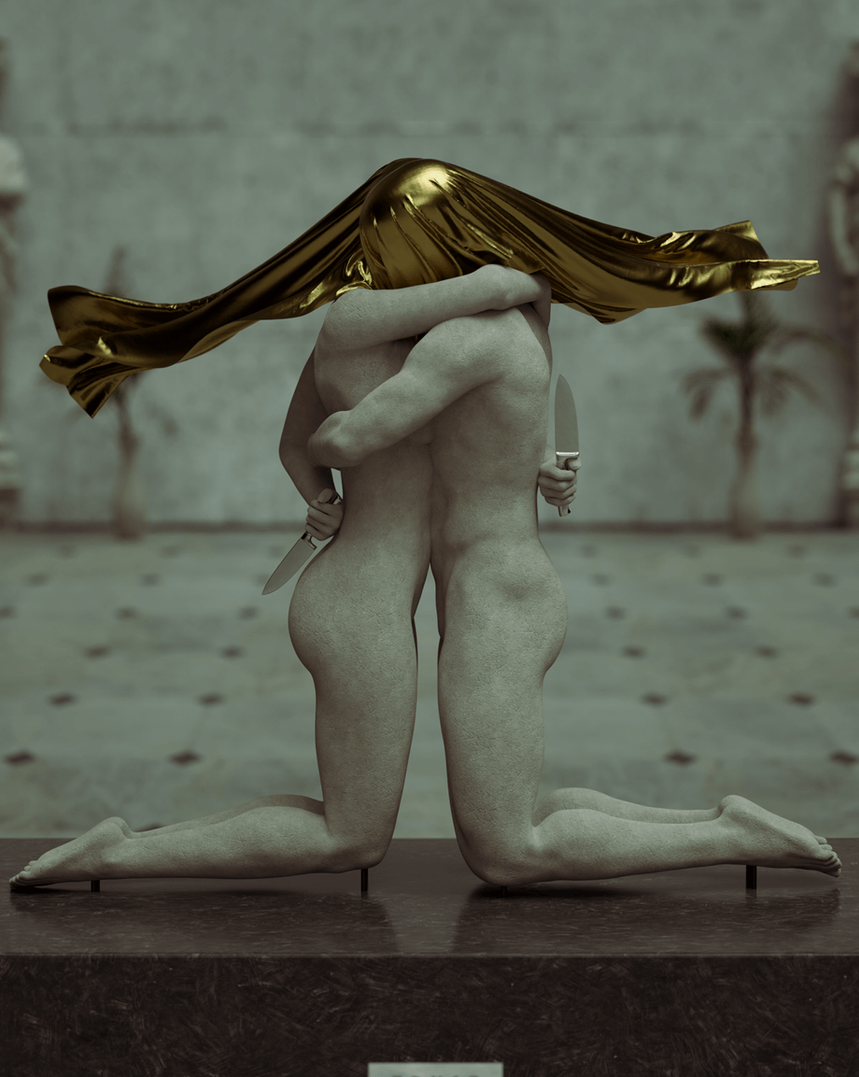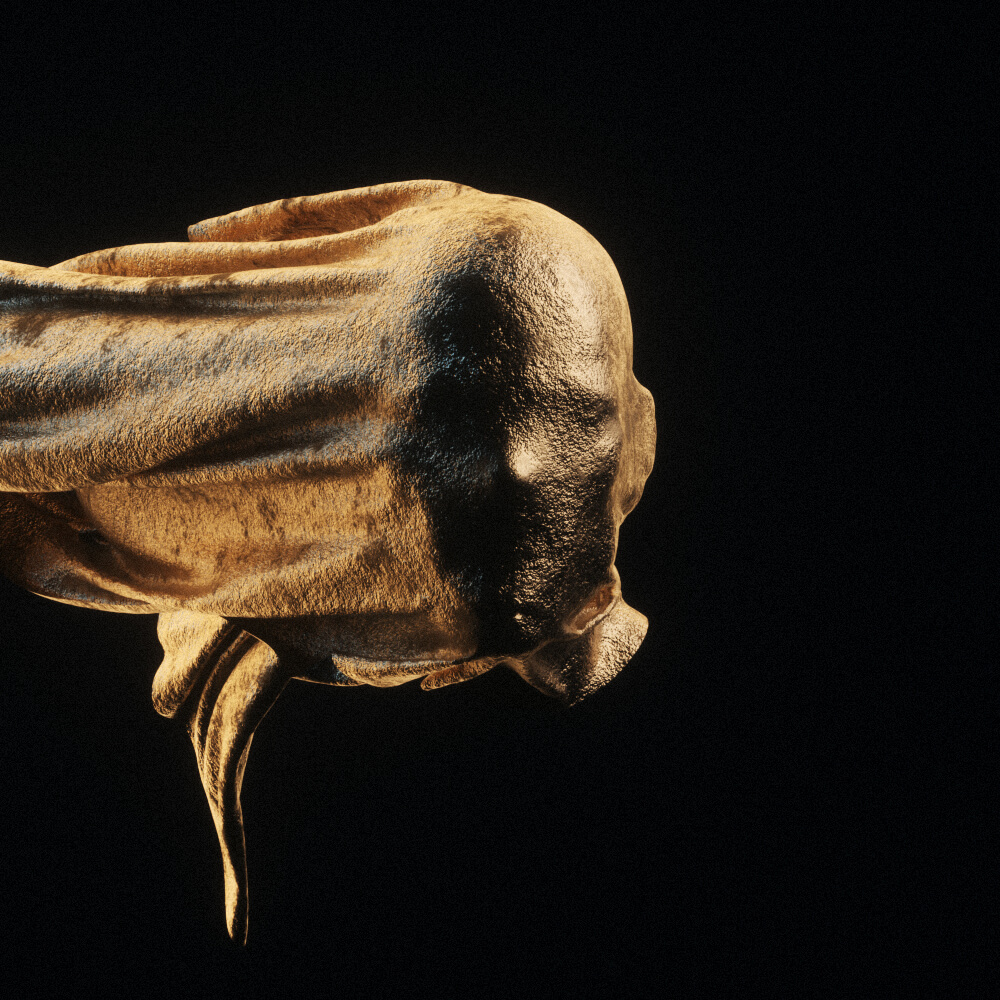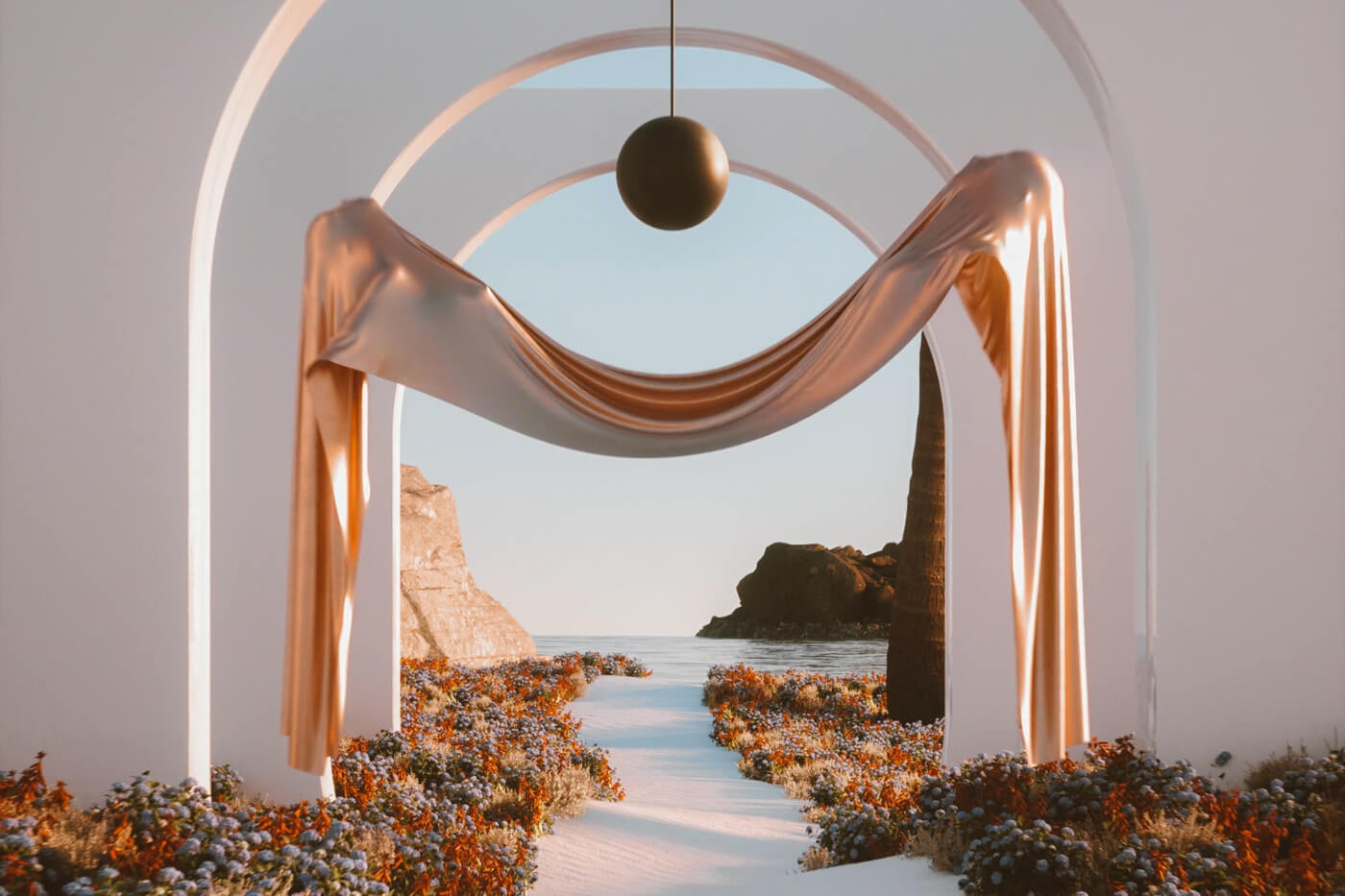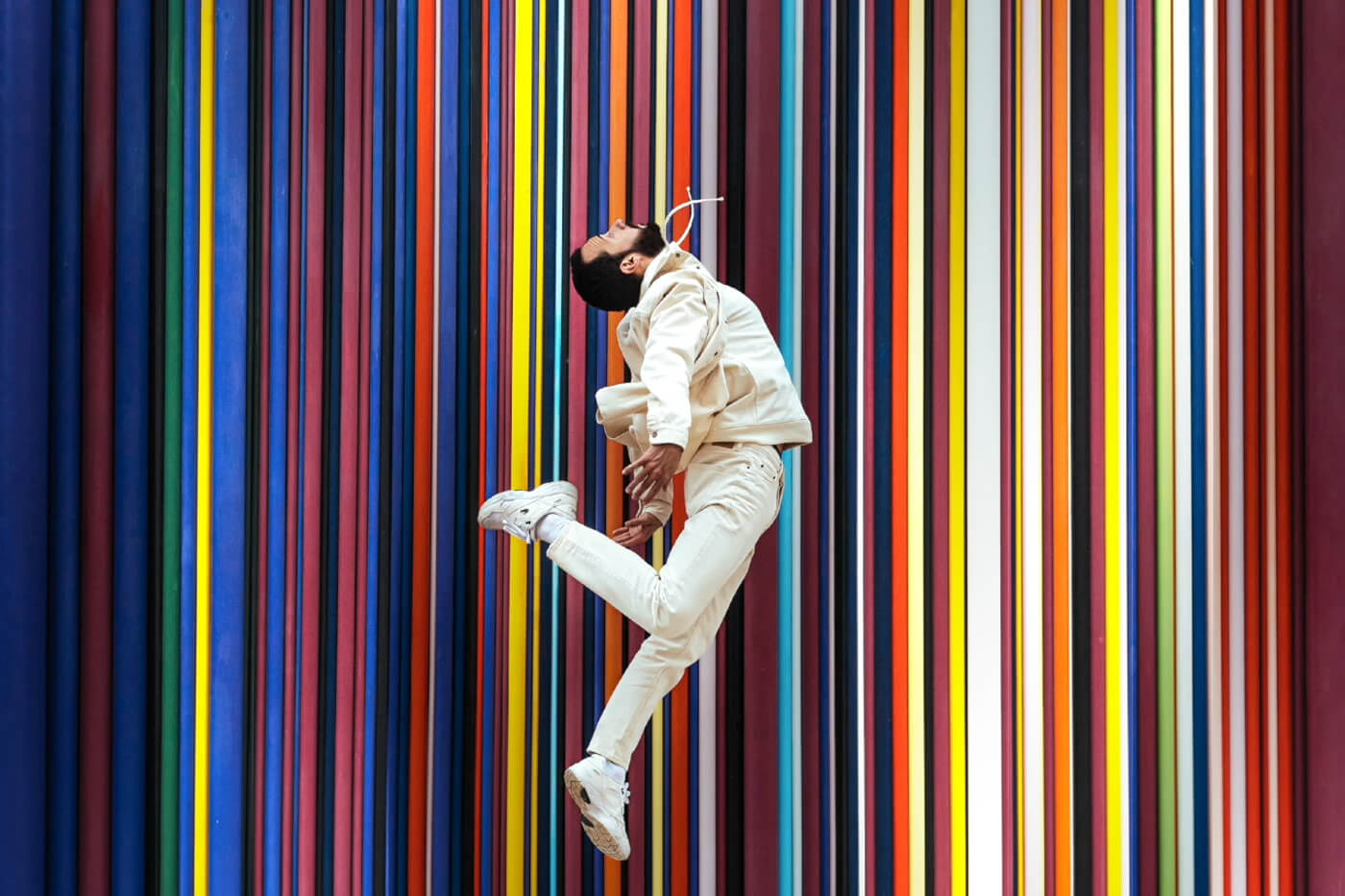Geren is an award-winning (International Photography Awards) 3D animation artist and art director based in Ankara, Turkey. Geren’s artwork is collected & exhibited worldwide and has been featured in global brands such as ELLE, L'officiel and Tatler Magazine.
Over the past two years, Geren has released a myriad of artworks (only a small number of them as NFTs), most of which have distinct one word titles and incorporate themes of light vs. dark. He’s become known for creating mesmerizing marble and gold textured sculptures depicting human form, which are defined by universal words like Control, Recover and Trust. Most recently, he released a compelling 2-minute plan-séquence (long take) art performance, entitled “TRUTH”. This elegant short film took 52 days to prepare for, and was shot in a single 2 minute take. The film includes a staggering 3552 individual frames and took 178 hours to fully render.

While Geren’s art has continually evolved, one constant that has been maintained is his paying homage to the old by blending it with the new. In his earlier works, Geren used photoshop and digital collage to modernize some of history’s most famous paintings, adding protagonists of films and elements of technology and contemporary pop culture. Today, Geren imagines, creates, and animates new worlds heavily inspired by the Neoclassical and Romantic periods. The artworks in his latest collection, “Timeless”, harmoniously blend the grand scale geometric forms and simplistic elements of 18th century neoclassical and romantic art with modern minimalism.

As Socrates said, "If you don't take risks, you’ll always work for someone who does."
Growing up, Geren was always drawing. He told TokenEditions that art was like therapy for him. Drawing gave him the ability to comfortably share his emotions through a page. Geren began working at a young age to help take care of his financial responsibilities. This didn’t deter from his deep knowing that becoming a full-time artist was always part of his future plan. He said that [referencing Socrates] “I guess I didn't have the courage back then, but I told myself I had to take risks.” The risks he took investing the money he made in his day job back into his art, paid off. Geren romanticized being able to make a living off of his art when he was a kid, and he’s now doing just that. Similarly to how some of his favorite periods of art inspired the next (Neoclassicism into the Romanticism Era), we are confident that Geren is playing a pivotal role influencing a new generation of 3D digital artists into the future. TOKENEDITIONS TALKS WITH GEREN
TOKENEDITIONS TALKS WITH GEREN
What was your first childhood memory of being creative?
I guess the creativity phase is the moment when you add your own ideas to the images you create. At first, I started to draw from what I saw as a child, then I began to draw pictures about my life. At some point, I decided to draw a moment that I envisioned, instead of a moment I was in. I guess that's when I got into the world of art. I was not someone whose family life was like other children. When I was a child (I think 3-4 years old), my parents separated, and my grandmother raised me because of my mother's health problems. I didn't have the best relationship with my parents, so I used scribbling on paper as an outlet for my emotions.
What led you down the path of being an artist?
I was always into art. I used to go to the art galleries featuring an artist in our neighborhood during breaks, while my friends were interested in other things. His drawings impressed me very much. He was an old man and liked to draw himself. He was a good artist. I would sit and watch him in silence, and I was impressed by his expression of loneliness. At that moment, I decided what I would do and how I wanted to move on.
Who do you look up to as an artist, and why?
I think I cannot limit the answer to a single artist. However, Rene Magritte is one of my favorite artists. His story and life with his mother greatly impacted me. His mother's death and the reflection on his art and narration style are really impressive. For example, his sequence in "The Kiss" depicted memories of his mother's death.
When did you begin to call yourself an artist? Was there a specific moment / accomplishment that led to this, or was it gradual?
I never called myself an artist, I just wanted people to accept it. Before that, I used to do temporary work and criticize everyday situations. For a long time, I could not spare much time for myself due to the difficulties of work and efforts to earn money. When I regained my financial freedom, I started to draw the things in my mind again. It was around this time that I started to be seen as an artist. I used the money I earned from nine-to-five jobs as an investment for my goals. Then I realized that I wanted to continue pursuing my passion and that art should be a way of expression for me in the future. The most important thing is to follow your dreams and work hard for them.
With the life experience you have now, what advice would you give yourself 10 years ago.
Instead of fulfilling other people's dreams and becoming a "slave in a tie", I would always try to pursue my own dreams. This was impossible because I didn’t come from wealth. I had aesthetic and financial concerns to take care of first, so it was necessary for me to start working at a young age. As Socrates said, "If you don't take risks, you’ll always work for someone who does." I guess I didn't have the courage back then, but I told myself I had to take risks.
If you could collaborate with any musician / composer / singer with your art, who would you choose, and why?
I would definitely say Carl Maria Friedrich Ernst von Weber. He was a pioneer of the romantic movement, and I listened to his most soul-touching compositions growing up. I try to bring his soul into the art and music projects that I create. In one of my works, me and a friend even reinterpreted a Carl Maria von Weber composition. Now I would love to work with Johann Johannsson- one of the greatest composers of our time, who passed away at an early age.
Who or what inspires you most?
I draw inspiration from worldly situations every day. Art is influenced by people's environment and experiences. It is an expression of the emotions of people's lives. Art can be a "moment" you see on the street, or a memory you’ve lived in the past.
Why do you make art?
Art is a phenomenon that nourishes and sustains people, emerging when the right time comes along. I’m inspired to paint something when words are not enough to express the feeling. A writer takes a pen, an artist a brush. I had a lonely childhood, and wasn’t a person who could share things with my family most of the time. You can't expect the feelings you try to share with your friends at a young age to garner a response from them, so I closed myself off and started drawing in my room. I put on paper what I experienced… what I wanted, my imagination, my hatred, my love. Art was like therapy. Just a piece of paper, a canvas and you. He would listen to you as you talked to him.
What does being creative mean to you?
Being creative requires observation. It requires knowing how to interpret what you see from a different angle. You can convey even a small message to a person with a bright idea and present a thought that he will not forget at that moment. Being creative is a difficult, hard-to-forget process.
If you could live in any era (past, present or future), when would you live, and why? Who would be the first person you try to collaborate with?
I would like to live in the Neoclassical era. This was a period that turned into a rise of Romanticism in the 18th century. This time period created art depicting the most accurate use of light, which brought a unique dimension to the pictures. It was a movement from which most of the great painters emerged from. It has been shaped with the revival of works from the Ancient Greek and Ancient Roman periods.
What tools did you use to make your drop on TokenEditions (e.g. software, computer, tablet, etc)?
I create my scenes with Cinema 4D. I use other applications after completing the rendering process, such as: Marvelous Designer, Daz3D, Zbrush for sculpting and small details and the latest, Octane. I do color correction, finishing touches and video montages with After Effects, and Photoshop for images.
Can you talk about your evolution as an artist and your journey into the NFT space?
In 2017, I was writing down some ideas that I wanted to focus on digital art. I was very proficient in digital programs. I either had to open an exhibition (which was not possible at that time due to financial opportunities) to present my works, or I could use social media to reach people. I opened an Instagram account in February 2017. I started to present today's problems, people's addictions, relationships and situations in a humorous language. In October 2020, I heard about NFTs from an Italian friend who was a collage artist like me. I was accepted into SuperRare in March 2021, and that's when my first NFT adventure began. Back then, I wanted to do something different. I made collages for 4-5 years, but I needed something new. I didn't have a good computer, but I was attracted by the freedom in the 3D world. It was difficult to use a nice machine in the conditions of the country I lived in back then. After selling my first 2 works, I was able to purchase a better computer. For the last 1.5 years, I’ve continued to grow, learn and create 3D visuals with the programs I mentioned previously.
Who are your favorite artists in the NFT space right now, and why?
Frederik Heyman, Kim Gryun, Mehdi Hadi, Ian Hubert, Raoul Marks, Dom Qwek, Pak, Cornelius Dammrich, Brandon B (iammaskarade) and Min Shi.
I love their perspectives and interpretations of art, and they are each very successful names in their own way. These artists aren’t afraid to define their own style when creating art. This is the most important thing.



